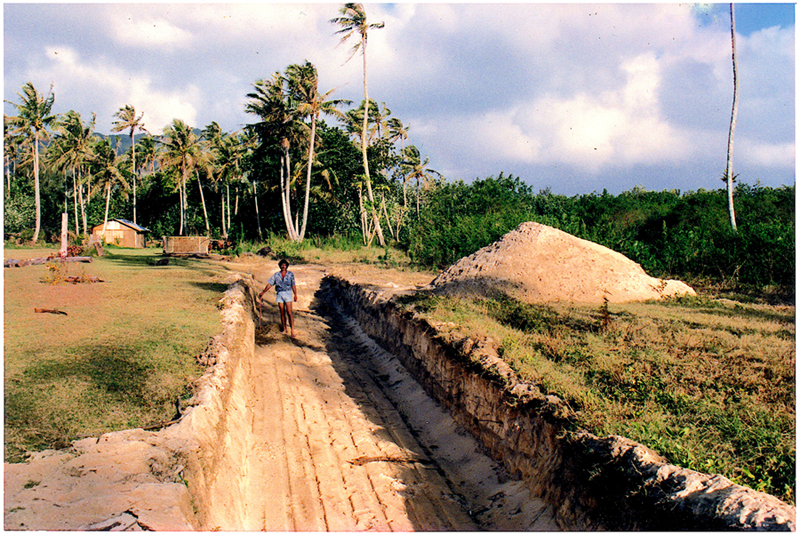
| Guide to Artifacts | INDEX to Volume 25 |
|
Rendezvous with Dr. Richard Shutler *****Richard Shutler is perhaps now best known to students of Archeology in Polynesia for his work in New Caledonia with E. W. Gifford. In July of 1952 they excavated the now famous site 13 which they named Lapita. This site yielded fragments of an ancient, elaborately decorated pottery which has been latterly found widely distributed in Polynesia. Today the terms, Lapita pottery and the Lapita Culture, have become well established, indeed the very roots of Polynesian ancestry are considered to be of Lapitoid origin. Now after over 40 years of research Dr. Shutler must be considered as one of the leading experts in the field of Lapita and Archeology in Polynesia. It was for me therefore a fortunate coincidence that he happened to be in his office, when I telephoned the Department of Archaeology at Simon Fraser University. *****Archeology and in a greater sense Anthropology are fields of research and investigation which are perhaps more fascinating and rewarding than almost any other. Once it gets into your blood there is little else in the world that can long distract one from this vital and important work. The dedication and energy of Dr. Shutler who is ever ready to tackle yet another expedition in the cause of Archeology, ample proof. Just now he was organizing his departure for a prehistoric site in Northern China where there may be evidence of one of the oldest human occupations ever discovered. One would think the prospect of archeology in Tubuai rather pale by comparison, this however was not the opinion of Dr. Shutler who was eager to see my work and showed much interest in the Tubuai artifacts which I had brought to the University to photograph. *****Within a short time it was evident that our meeting was destined to be more than a brief encounter and soon we were thrashing out the logistics of an expedition to Tubuai. I had brought with me copies of Volume 17 and 18 and from these it was possible to envision a further extension of the work started with Marimari Kellum in an endeavor to locate early sites. Certainly the artifact evidence was beginning to confirm the presence of an early occupation. I felt confident that given more extensive excavation an early site would be found. Before however there were all the formalities and authorizations to attend to. I returned to Tahiti with renewed energy and high spirits imagining that as last we might be able to resolve the issue of early settlement in Tubuai. Implementological research has paved the way, now it remains for Archeology to precision the actual date of these occupations. The ATIAHARA Trench |

|
*****As it sometimes happens, our destiny and fate are largely altered by events directed by forces beyond our control. Such was the case, in August of 1994
, at ATIAHARA #3, where,I was shocked to discover a recently excavated trench of enormous proportions. Last year at this same site a number of holes, dug in preparation for house construction, revealed the presence of deep deposits. At that time I urged the owner to try to protect the site, now however the damage was done and there remained only the possibility of recovering stratigraphic information from the trench walls and the salvage of exposed cultural material. *****The trench had been excavated by a large mechanized shoveler (pelleteuse) and was uniformly wide and deep. It measured approximately 33 meters long, 3 meters wide by 1.3 meters deep and appears to be located very close to if not on the limit between ATIAHARA #3 and ATIAHARA #4. It is placed about 20 meters from the road pavement longitudinally (oriented at about 126 degrees from magnetic North as is also the boundary (originally estimated to be 129 degrees) see map 25.1) *****I immediately sought permission from the owner to recover whatever could be salvaged and proceeded to photograph the trench. In all the test pits excavated with Marimari Kellem we never encountered anything of the likes of the deposits at ATIAHARA. Here there is evidence of a distinct deep layer a full 70 cm below the surface. In fact this was exactly what we had been looking for but never found and it was very exciting to see such a large deposit so fully exposed. |
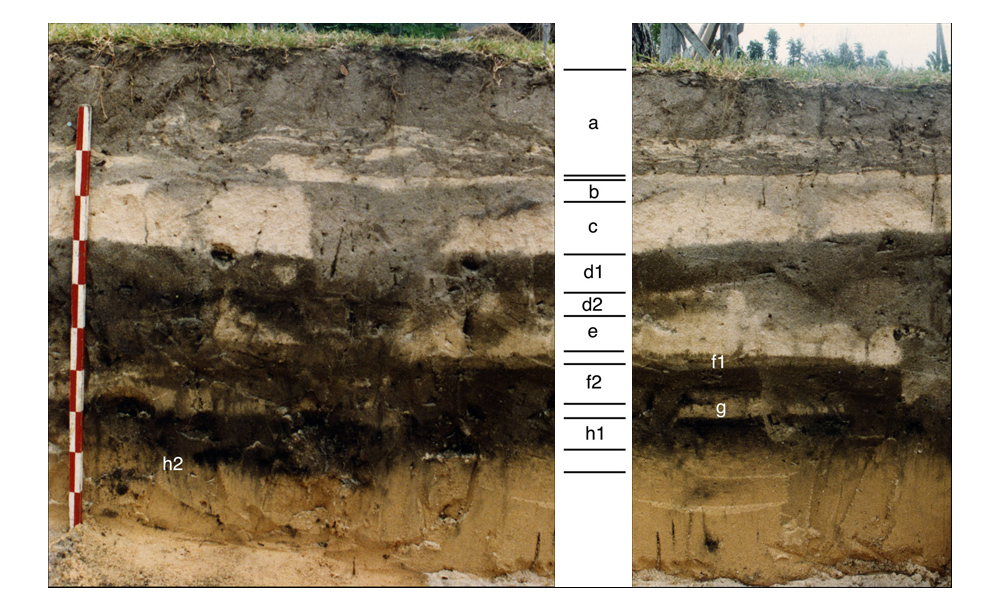
|
*****Within a very short time I had found in the lowest layer some large pieces of charcoal. I photographed the intact charcoal then extracted and bagged the sample. Along with the charcoal I recovered numerous small bones and stone from the same general area of the layer. A number of adze fragments were recovered after a brief search of the excavated material as well as an unusual 2C butt fragment recovered from the floor of the trench. *****This accomplished I was quick to telephone Dr. Shutler who advised drying and separating the charcoal samples. The samples would then be sent for a radio carbon analysis. I spent the next few days trying to dry the material recovered and finally sent the charcoal off to Dr. Shutler who forwarded it to Beta Analytic. I made a few more inspections of the trench and discovered some large bone fragments emerging from the bottom of the lowest layer at the far south end of the west wall. These were bagged and the location photographed, the bones were later dried and appear to be the top half of a pig skull, a further search of the location where these bones were recovered was not very productive, no other large bones could be located although a quantity of charcoal was discovered nearby. The charcoal was recovered from the bottom of the lowest layer and photographs again taken (see photos numbered 13,14, 19/9/94) |
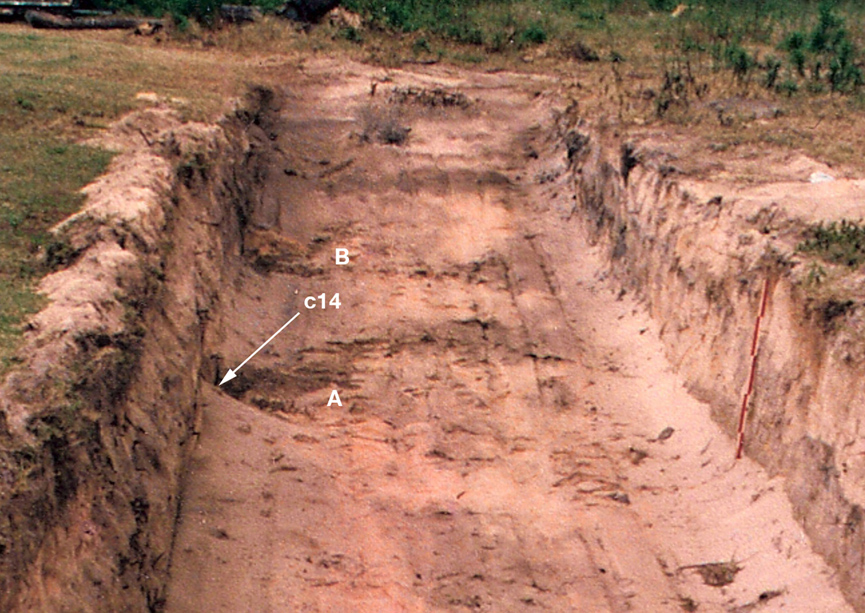
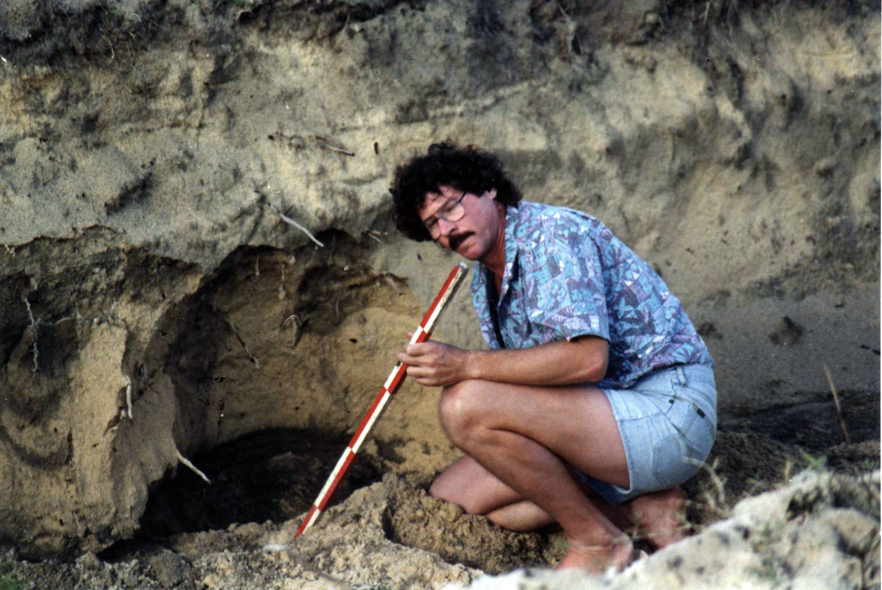
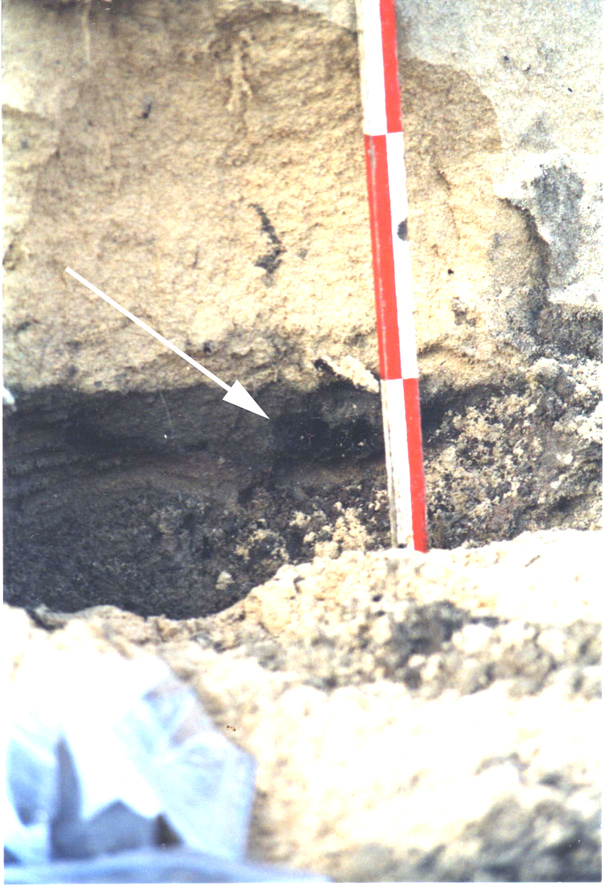
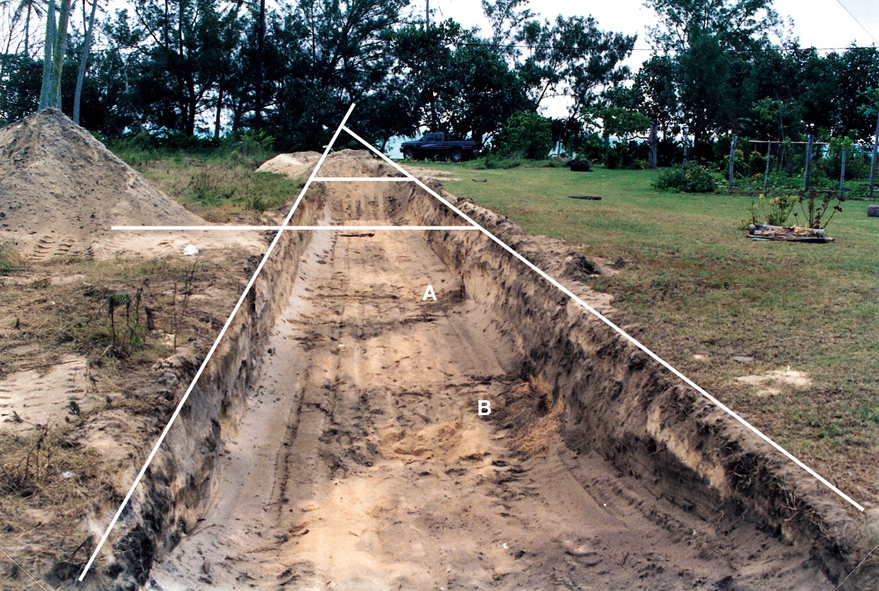
| Go to Comparative Implementology | go to ATIAHARA.ORG |